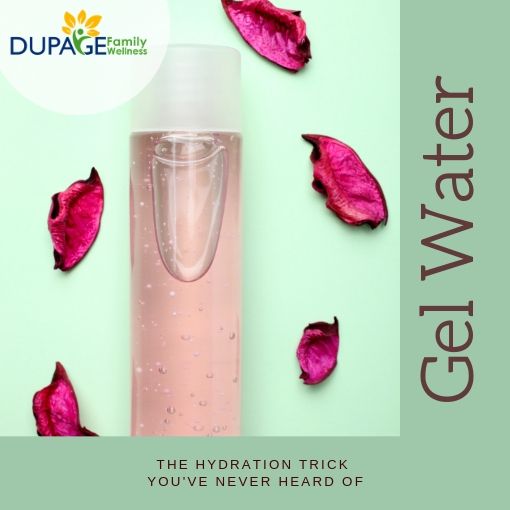 Gina Bria was an anthropologist studying how desert cultures survived with very little water when she got a call from her mother’s care facility. She was dismayed to hear that her mother was suffering from chronic dehydration. Bria decided to delve into her research to see if there was anything that she could learn from the desert cultures to help her mom.
Gina Bria was an anthropologist studying how desert cultures survived with very little water when she got a call from her mother’s care facility. She was dismayed to hear that her mother was suffering from chronic dehydration. Bria decided to delve into her research to see if there was anything that she could learn from the desert cultures to help her mom.
Bria learned from her research that the Tarahumara people of Mexico used chia seeds to aid in hydration. Deciding to adapt this practice for her mother, she used her coffee grinder to turn some chia seeds into powder and instructed the caregiver to add it to her mom’s orange juice each morning. That did the trick and her mom did not have any more issues with chronic dehydration!
What Is Gel Water?
In their book Quench, authors Cohen and Bria describe gel water, or living water, as a “newly identified phase of water that’s not quite liquid, vapor, or ice. (It is) identified by an extra hydrogen and oxygen atom, so the molecular structure is H3O2.” Gel water exists in plants and can be found in fruits, vegetables, & seeds.
The Aztecs and Incas are thought to have often subsisted on only chia and cacti, actually going weeks without water. The fact that these plant products are full of gel water is probably the reason they could survive in this way!
Why Does It Work?
According to Dr. Gerald Pollack, a bioengineering professor at the University of Washington, gel water is actually “better at hydrating than regular water because its absorptive properties help retain more water in the body.” Water from plants is absorbed more slowly, so it stays in our bodies longer. This makes gel water a great source of hydration.
In addition, the level of osmolality in gel water makes it easier for absorption. Dr. Stacy Sims, a nutrition scientist at the University of Waikato in New Zealand and author of Roar, explains that plain water has a “low osmolality,” meaning it has a lower concentration of particles like glucose and sodium. Because of this it is not absorbed effectively through the small intestine, where 95 percent of water absorption takes place.
Dr. Schaefer, a chiropractor and educator for the International Chiropractic Pediatric Association, also explains that gel water “conducts electricity in the body far more efficiently than regular water because (of) its density and its unique, constantly changing structure.” While the role of electricity in body function is a fairly new area of research, she states that “foods containing electrolytes release electrical charges... and start a cascade of hydrogen bonding that triggers the creation of more gel water and better hydration.”
The Role Of Movement In Hydration
“For many years, we’ve operated with the assumption that the path to hydration was drinking eight glasses of water daily—the picture is actually much more complex.” -Quench
One aspect of this complexity is the role of movement in hydration. The fascia is a thin sheath of fibrous tissue that encloses both our muscles and organs. Research has found that the fascia transports water molecules through the body. Certain activities encourage this process.
According to Bria, "twisting movements are especially good for hydration." Spending even a little time doing yoga or stretching can actually help your body to stay hydrated.
Quick Tips For Hydration
Schaefer offers some simple tips to incorporate gel water into your daily life so you can enjoy the benefits of increased hydration.
- Start your day with 16 oz of gel water before you put anything else in your system (including coffee). Water with lemon would be a great choice for a morning drink.
- To boost the osmolality of your water, stir 1/16 teaspoon of table salt into every eight ounces of regular water you drink.
- Encourage the production of gel water by adding citrus fruit (lemon, lime, grapefruit, etc.) to water throughout the day.
- Eat lots of fruits and vegetables. In addition to being full of gel water themselves, they contain naturally occurring electrolytes and are high in fiber which helps the body absorb the gel water.
- Drink and cook with bone broth. It is full of both collagen and gel water.
- Mix a teaspoon of crushed chia seeds to smoothies and other drinks.
- Cook with coconut and ghee. Both are full of gel water and electrolytes.
Fun Recipes To Increase Hydration
- Aloe Water
- Chia Gel
- Sports Drink
- Watermelon Drink
- Infused Water
- Chia Parfait
- Chia Pudding
- Blueberry Chia Seed Jam (If you make this recipe, be sure to use it in the Blueberry Chia Smoothie and the Blueberry Chia Ice Pops.)
If you decide to try any of these tips, be sure to post a picture on the DuPage Family Wellness Facebook page!
Dr. Jamie
*I earn a small commission on qualifying purchases as an Amazon Associate.

